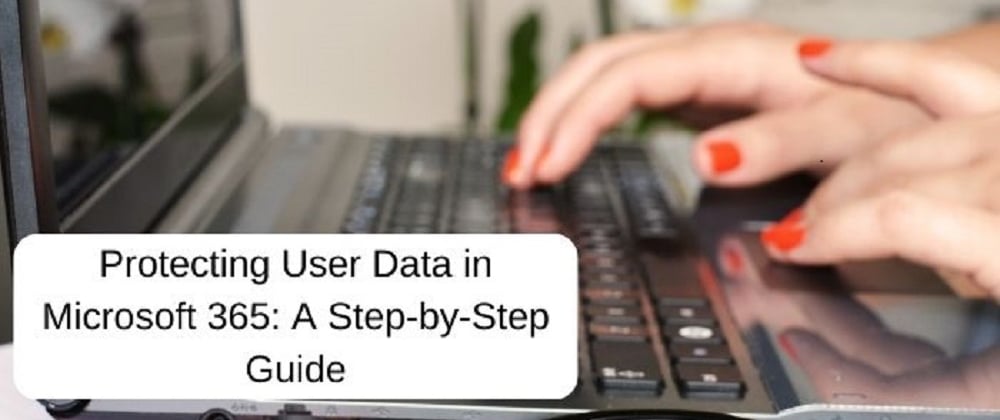Introduction:
Microsoft 365 is a popular productivity suite used by organizations of all sizes. While it offers a wealth of features and benefits, it also poses security challenges, especially in terms of protecting user data. With cyber threats on the rise, it's more important than ever to ensure that your Microsoft 365 user accounts and data are secure. In this article, we'll provide a step-by-step guide to help you safeguard your Microsoft 365 environment against data loss. We'll cover the threat landscape, Microsoft 365 security features, best practices for securing user accounts, and data backup solutions for Microsoft 365. With the information and recommendations provided in this guide, you'll be well-equipped to protect your organization's valuable data and ensure business continuity.
Understanding the Threat Landscape
Data security is a critical issue for all organizations that use Microsoft 365. With the increasing sophistication of cyber threats, it's essential to be aware of the potential risks to your user accounts and data. The following are some of the common types of data loss that organizations face in a Microsoft 365 environment:
Ransomware attacks: Ransomware is a type of malware that encrypts files and demands payment in exchange for the decryption key. This type of attack can be devastating, as it can lead to the permanent loss of data.
Phishing attacks: Phishing attacks are designed to trick users into disclosing their login credentials or personal information. These attacks can be delivered through email, instant messaging, or malicious websites, and can result in unauthorized access to user accounts and data.
Insider threats: Insider threats can occur when a current or former employee with access to sensitive data deliberately or accidentally misuses that data.
Data breaches: Data breaches can occur when unauthorized individuals gain access to sensitive data. This can be due to a lack of security measures or a security breach at a third-party provider.
It's important to be aware of these threats and take proactive measures to protect your Microsoft 365 environment against data loss. In the next section, we'll discuss the security features that are available in Microsoft 365 to help you protect your data.
Microsoft 365 Security Features
Microsoft 365 offers a variety of security features to help protect user accounts and data. These features include:
Multi-Factor Authentication (MFA): MFA is a security process that requires users to provide two or more authentication factors when accessing their accounts. This can include a password and a security code sent to their phone, for example. Enabling MFA helps to prevent unauthorized access to user accounts.
Data Encryption: Microsoft 365 uses encryption to protect data both in transit and at rest. Data in transit is encrypted as it travels between users and Microsoft 365, while data at rest is encrypted on Microsoft's servers.
Threat Protection: Microsoft 365 includes threat protection features, such as Advanced Threat Protection (ATP), that help to prevent malware and other threats from entering your environment. ATP uses artificial intelligence and machine learning to identify and block threats before they can cause damage.
Compliance and Auditing: Microsoft 365 provides compliance and auditing features that help organizations meet regulatory requirements and monitor user activity. These features include audit logs, retention policies, and eDiscovery capabilities.
By taking advantage of these security features, organizations can significantly reduce the risk of data loss in their Microsoft 365 environment. However, it's important to note that these features alone are not enough to fully protect user accounts and data. In the next section, we'll discuss best practices for securing user accounts in Microsoft 365.
Best Practices for Securing User Accounts
In addition to using the security features provided by Microsoft 365, there are several best practices that organizations can follow to help secure their user accounts and data:
Use strong passwords: Encourage users to create strong, unique passwords and to avoid using the same password for multiple accounts. Consider implementing password policies that enforce the use of strong passwords.
Enable multi-factor authentication: Require all users to enable MFA on their accounts to help prevent unauthorized access.
Restrict access to sensitive data: Use role-based access controls and other security measures to restrict access to sensitive data to only those users who need it.
Keep software up to date: Regularly update all software, including Microsoft 365, to ensure that security vulnerabilities are patched.
Educate users: Provide regular training to users on how to identify and avoid phishing attacks, as well as how to secure their accounts and devices.
By following these best practices, organizations can help to minimize the risk of data loss in their Microsoft 365 environment. However, it's also important to have a backup plan in place in case of an unexpected disaster. In the next section, we'll discuss data backup solutions for Microsoft 365.
Data Backup Solutions for Microsoft 365
Having a backup plan in place is an essential part of protecting against data loss in Microsoft 365. There are several data backup solutions available for Microsoft 365, including:
Microsoft 365 Backup: Microsoft 365 Backup is a built-in backup solution for Microsoft 365 that provides backup and recovery for Exchange Online, SharePoint Online, and OneDrive for Business. This solution can be managed from the Microsoft 365 admin center and provides options for backing up data on a schedule, as well as for recovering data in the event of an accidental deletion or data loss.
Third-party backup solutions: There are also several third-party backup solutions available for Microsoft 365. These solutions offer advanced backup and recovery features, such as the ability to recover individual items, complete site collections, or entire SharePoint sites.
Regardless of the solution you choose, it's important to regularly test your backup and recovery processes to ensure that you can quickly recover data in the event of a disaster.
In conclusion, securing user accounts and data in Microsoft 365 requires a combination of security features, best practices, and backup solutions. By following the recommendations outlined in this article, organizations can significantly reduce the risk of data loss in their Microsoft 365 environment and ensure business continuity.
Conclusion:
In today's digital world, securing user accounts and data is more important than ever. Microsoft 365 offers a range of security features, such as multi-factor authentication, data encryption, threat protection, and compliance and auditing, to help organizations protect their data. Additionally, following best practices such as using strong passwords, restricting access to sensitive data, and educating users can further enhance security.
However, even with the best security measures in place, disasters can still occur. That's why it's important to have a backup plan in place. Microsoft 365 Backup and third-party backup solutions can help organizations recover data in the event of a disaster and ensure business continuity.
In conclusion, protecting user accounts and data in Microsoft 365 requires a multi-layered approach that includes security features, best practices, and a backup plan. By following these recommendations, organizations can help to minimize the risk of data loss and ensure the protection of their critical data and user accounts.
Check the original article here.







Top comments (0)